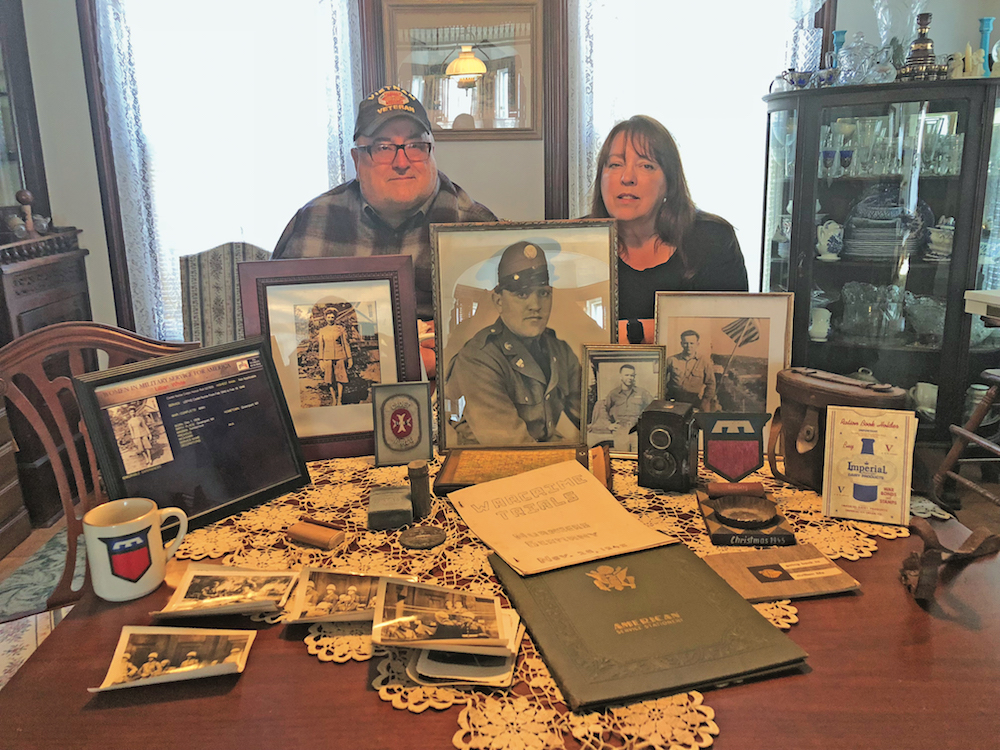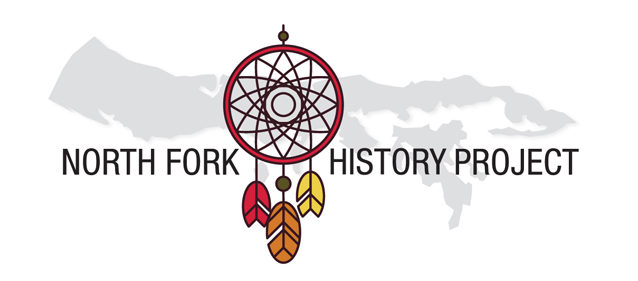North Fork History Project: Greenport during World War II

Cliff Utz Jr. remembers sitting in the back seat of a DeSoto as a 4-year-old on Dec. 7, 1941, when he first heard the news. The car was driving on a bridge over Hashamomuck Pond in Southold when a radio bulletin detailed the news of Japan’s surprise attack on Pearl Harbor. Mr. Utz was at too tender an age to fully appreciate what that meant. What was more telling to him was his father’s reaction.
“He said something to the effect that this was catastrophic,” recalled Mr. Utz.
At about the same time, Jack Heaney was 9 years old and playing across the street from his Fourth Avenue house in Greenport when his mother hollered out the terrible news from Hawaii to him. “All I could think about was all the fellas that had to go into the service,” he said.
The attack triggered America’s entry into World War II. On the following day, both the United States and Great Britain declared war on Japan. Two days after that, Germany and Italy declared war on the U.S.
The world had become embroiled in the greatest event of the 20th century, a conflagration that ushered in the atomic age and shaped the future in ways that are still being felt.
America went to war and Greenport did so with it. The little village played a big role by rolling up its sleeves and going to work.
“We were the good guys and they were the bad guys,” Jack Sherwood, a Greenporter and former Marine who took part in the battle for Iwo Jima, told The Suffolk Times in a 1999 interview. “We were going to save the world from Naziism.”
Four days after the Japanese attack, the front page of The Suffolk Times was centered with a piece outlined by a thick black border and headlined, “We Are Now at War!” It began: “The United States of America is at war with the Axis. War means the disputing of our ordinary way of life. It means hardships, sacrifices and willingness to comply with rules for our safety and the safety of our children.”

One of Greenport’s greatest contributions to the war effort came in the form of shipbuilding, no surprise, given the village’s long ties to the water. The war brought a boom in shipbuilding to the village. A fleet of small warships — minesweepers, subchasers, landing craft and tugboats — were built and launched by the Greenport Basin & Construction Company under Navy contract. These vessels, requiring non-magnetic construction so as not to attract mines, served in all theaters of the war, mostly in the North Atlantic. Half the minesweepers built in Greenport were said to have gone to England as part of the land/lease program pushed forward by President Roosevelt.
“Everybody was patriotic and ready to go,” Greenport historian Carlos DeJesus said. “They came out of the farm fields, they came off of the fishing boats and so on … They had to stop all that and they went into the service.”
Local men served in all branches of the military service. Defense workers were as valuable as soldiers, sailors and airmen. These workers played a vital role on the homefront.
During the war Greenport became a busy place as some 3,000 workers flooded in to work at the shipyard. The Federal Defense Housing Project erected “Cardboard City,” portable housing for the workers. These structures still stand.
Greenport Basin, which had been a sleepy shipyard on Carpenter Street, kicked into action. The shipyard was a hub of activity, with two 12-hour shifts during weekdays and work on weekends as well. Howard Valentine, who had worked at the shipyard, told The Suffolk Times in 1990 that when the war broke out “we had people becoming carpenters who had never held a hammer or saw in their hands. But they did well. They learned the trade just like Rosie the Riveter.”

Mr. Utz recalled seeing flatbed trucks lined up on the north side of Front Street, picking up landing barges to take to the Brooklyn Navy yard.
A surge of patriotism swept through Greenport.
“The feeling of patriotism was overwhelming, as was the excitement of having celebrities like songbird Kate Smith and diva Lily Pons come to Greenport to christen the minesweepers,” Antonia Booth and Thomas Monsell wrote in their book, “Images of America GREENPORT.” “In true Greenport fashion, not only stars but also local high school girls were asked to crack a bottle of champagne against the bow of the new ships.”
John Lademann of Cutchogue met Ms. Smith and witnessed the christening of boats. His father, Edward A. Lademann Sr., was an electrician who worked for Smith Meeker Engineering Company. Smith Meeker did electrical work at Greenport Basin.
The younger Mr. Lademann was 10 years old when his family moved to Greenport in December of 1941. “It was a busy place,” he said.
Indeed it was. By January 1945, Greenport Basin had built over 453 vessels for the military, according to David Corwin and Gail Horton’s book “Greenport.”
Greenport was also one of the headquarters for a so-called civilian Picket Patrol (also referred to as a Hooligan Navy), a band of civilians who patrolled local waters, sometimes under hazardous conditions, keeping an eye out for German submarines.
Civilians did their part in various ways as the entire nation kicked into war mode. Rationing was put into effect for food and gas. Collection drives were made for metals, tires, waste fat. Restrictions were placed on lights at night that might attract enemy aircraft. Boys volunteered for depleted fire departments. Posters encouraged people to buy war bonds.
Sacrifice was the order of the day.
The war also brought about social change. Women took on jobs they normally had not, filling in for men who had gone off to war.
The war touched everyone’s lives and was all-consuming. It would have been virtually impossible for one to go through a day without hearing a reference to the war. It was in the newspapers, on the radio, talked about in the streets.
“The only thing on the radio was war,” Mr. Utz said. “As a kid, I didn’t listen to the newscasts, but at 5 o’clock every day, there was a series of 15-minute adventure stories that all the kids listened to … and it all was centered on the war.”

The great fear of Greenporters with loved ones overseas was seeing a man from the telegraph office walking to their front door with an envelope. That was bad news.
“As a young kid we really sensed it because we would be down by the railroad and we would see guys going off to war and guys coming back wounded and sometimes bodies,” said Mr. Heaney, who had three older brothers serve in the military at the time (they all survived).
Another one who survived, but not without injury, was Mr. Sherwood, who experienced a hell on earth called Iwo Jima. Mr. Sherwood recounted his experience during the battle for that island in early 1945. “The first thing that we saw were the dead bodies and dismembered parts — what was left of the Americans — piled in layers on top of one another,” he said in an interview. “There was a smell you never forget. It was the smell of death.”
The brutal battle cost over 25,000 lives, including 6,800 American sailors and Marines, according to the Navy Department Library. Mr. Sherwood was one of 1,500 Marines wounded, earning a Purple Heart. On the 16th day of fighting, he was shot by a Japanese sniper, the bullet shattering his left kneecap.
Clarence Corazzini, a local pilot in the U.S. Army Air Corps, was lost while flying solo in a P-51 over the Philippines. “He developed engine trouble and they told him to bail out, to get out,” his brother, Anthony, told The Suffolk Times. “They never recovered the body.”
Mr. Corazzini was eventually declared dead.
At least one area serviceman survived the hazards of war, only to be killed close to home. Marcus Duvall of Orient flew successful missions on a B-24 for the Army Air Force in Europe, but was killed in a car accident in Greenport near the end of the war, according to the Oysterponds Historical Society.
Everett Charles Corwin of Greenport served in the Army and was in Africa when German Gen. Erwin Rommel was there with his Afrika Korps. His son, lifelong Greenporter Butch Corwin, said when American troops landed in Italy, his father told fellow soldiers, “Don’t worry about this landing craft because I know everybody who built it.”
The parents of Butch Corwin’s wife, Marilyn Corwin, were both involved in the war effort. Her father, Robert White, was in the Battle of the Bulge with Gen. George Patton’s army, and her mother, Lillian, was in the U.S. Cadet Nurse Corps. Bob White also attended the postwar Nuremberg trials.
Ms. Corwin said when her father was first deployed overseas, his destination was a secret, but he still found a way to let his wife know where he was headed in a telegram. “All he put down was ‘east of Hampton Bays,’ so they knew he was going to Southampton, England,” said Ms. Corwin.
Relief was felt when the war came to an end in mid-August of 1945. That was a happy memory for Mr. Heaney. “We just jumped up and down,” he said. “We were so happy.”
The war was over and Greenport had done its part to make that happen.
“I think that Greenport gave everything that it possibly could,” Mr. Heaney said. “They really did a lot.”
Part I: Before anything else, there was ice
Part II: Long before the ‘first families’
Part III: When English arrive, Indians disperse?
Part IV: So, who was really here first?
Part V: Slavery, an ignored part of our history
Part VI: Slavery on Shelter Island, a story not hidden away
Part VII: When was Cutchogue’s Old House built?
Part VIII: The Revolution ‘tore families apart’
Part IX: For one loyalist, all would be lost
Part X: From growing divisions within Southold, River Head town is born
Part XI: An epic saga of East End whaling
Part XII: Murders in 1854 shattered a hamlet
Part XIII: The Wickham murders part two
Part XIV: A Civil War on the North Fork
Part XVI: Shelter Island’s place in Quaker history
Part XVII: 80 years ago, no one saw the Hurricane of 1938 coming
Part XVIII: 100 years ago, peace came at the 11th Hour
Part XIX:The scallop industry has a rich past on eastern Long Island










